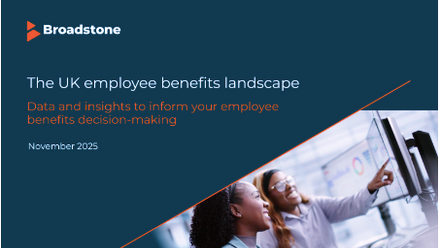REBA Inside Track: why data is about to change health and wellbeing benefits decisions
If you are anything like the vast majority of REBA members, then at some point in the past year or so you – or a colleague – have had to seriously question which health and wellbeing benefits you offer to employees, why you’re offering them and if you’re offering the most effective selection for your workforce profile.
As is daily routine at REBA, we’re constantly having off-the-record chats with those responsible for buying benefits as well as interrogating raw data coming through our regular surveys.
The upshot is that we can see that health and wellbeing benefits are undergoing significant change, but there is more to come.
Those of you who bought benefits for well over a decade may recall a time when return-on-investment on benefits, such as insurances, had to be justified purely in pounds and pence.
Private medical insurance (PMI), for example, being offered to more senior and higher paid employees was explained because they were the most expensive people to have away from work due to health. This type of thinking is less common today.
This is because the big shift in recent years has been the reshaping of health and wellbeing offerings driven by employee demand, choice or need to meet wider HR objectives such as recruitment, motivation, workforce wellbeing and sustainable health.
There is greater awareness of how to use health and wellbeing strategies to improve and support workforce diversity, equity and inclusion to improve performance and productivity for all levels of worker. From menopause and carer support to neurodiversity assessments and specific medical conditions by cohort, offerings have widened.
This journey has been a good one; the days of PMI only for the bosses are gradually fading.
Now a new challenge is emerging: how much is too much? Very few budgets can stretch to buying every benefit on the market. In short, the types of employer-funded health benefits that have previously served well are, once again, needing to adapt.
Regardless of which countries you are responsible for (including the UK), chances are you are grappling with the design, usage, costs and outcome objectives for your employees' health benefits and trying to make your sums add up while looking at the outcomes you are achieving from spend.
You’re not alone: medical advances, rising chronic illnesses, poor lifestyle habits and ageing populations across most of the globe, mean that benefits professionals are being increasingly challenged to keep within their budgets and need to forecast more robustly to justify how to spend today to mitigate costs and risks tomorrow.
While much of the robust quality data to react to these challenges is tricky to access and analyse, there are plenty of moves afoot across the benefits and insurances supply chain that are starting to change this.
It may be, that within the next few years we’ll look back to 2025 and be amazed at just how murky our data insights were and how different our decisions would have been.







